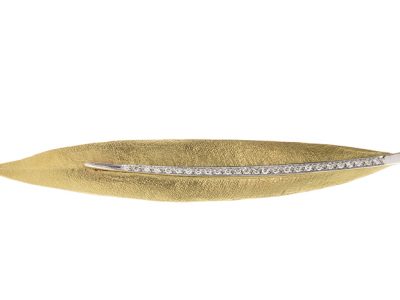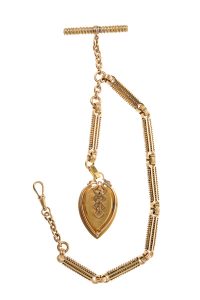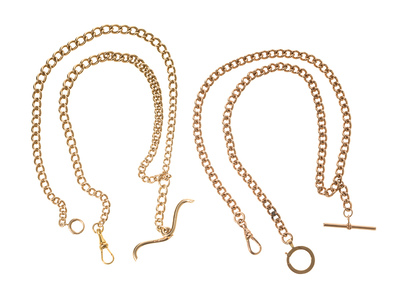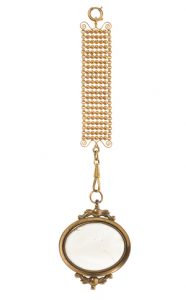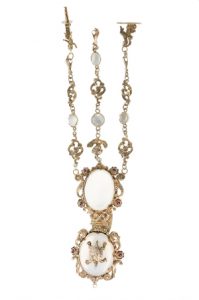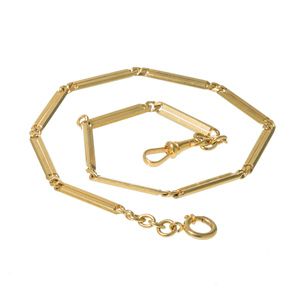Pocket watch accessories, a complement to men's clothing.

Pocket watches have always been considered a symbol of dignity and wealth, being an indispensable accessory for the wealthy classes.
Clocks first appeared in France in the 15th century, although the creation of pocket watches with an ovoid shape is attributed to the German Peter Henlein of Nuremberg. The pocket watch with the style we all know came in the 18th century thanks to the introduction of the vest, since the rounded and flat shape makes it perfect for inserting it in the pocket without damaging the fabric.
At first they were worn around the neck with a chain, or around the waist with a brooch or chatelaine, made up of several chains from which small perfumers, stamps and other accessories were suspended, in addition to the watch. From the 19th century onwards, watches hung from fob watches and were kept in the vest, a men’s garment that became fashionable in this century.
In our next watch auction we can find a good selection of fob watches and chatelaines, which can help us both to wear our watch with elegance, and to enrich our outfit, with the chains that complement this type of watches. Finding a balance between classic style and steampunk attire, and much more current, is not as difficult as one might think.
For a more casual look, clip your pocket watch to your belt or use clip-on chains or belt hooks.

The fob is a dangling chain to hold the pocket watch, it can hang outside the belt or drop down a little. It can be clipped to the pocket opposite your dominant hand to make telling time easier. If you are going to wear a shirt, you can also pass the chain through one of the lower buttons of the shirt. We can even use the fob as a neck chain, and thus give our outfit an air of elegance.
Our pocket watch can also be hung on a Chatelaine, which is an ornament worn by both men and women and usually attached to a belt or pocket, with chains with hooks to hang small items such as watches, keys, stamps, tablets, scissors and wallets. The word chatelaine, or castellaine, is derived from a word meaning the keeper of a castle, and originated in Medieval France, therefore in origin, it was the person in charge of the keys. During the 18th century, chatelaines were particularly popular.
The best ones were made of gold and the cheapest ones, of a yellow alloy called pinchbeck (similor in Spanish) in honor of the inventor of the material, and consists of an alloy of 10% zinc and 90% copper with which the color and brightness of gold is obtained.
Some Chatelaines were decorated with embossing or enamel and depicted biblical, mythological or genre scenes, others were inlaid with agate and, towards the end of the 18th century, some were adorned with cameos in a neoclassical style.
Several Chatelaines are up for bidding in our next watch auction, and it may be time to get one of them, as they can give a special personality to your outfit.
Related Posts
Flora and fauna source of inspiration for the art of goldsmithing
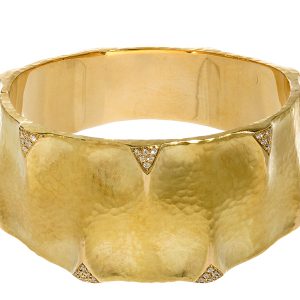
Since the Renaissance with the Medici in Florence and the Sforza family in Milan, Italy has been the cradle of the great artists in Europe.
Great creators have been setting international trends to this day.
Italian goldsmithing is one of the wonders of Made in Italy.
Perfect fusion of tradition and modernity, it synthesizes the love of beauty with artisan experience and the ability to preserve ancient knowledge that has made Italy one of the world leaders in the production of jewelery and goldsmiths.
In Italy there is a flourishing luxury market, of international fame, represented by the so-called distretti (literally district, referring to important production areas) for gold, especially that of Valenza ., which is one of the best known and most important in the international jewelery sector. The district de Valenza includes eight neighboring municipalities where high-end jewelery and goldsmiths are produced and sold.
The city, which will be included among the places of particular interest in the Milan Expo, opened its Gioiello Museum (Museo de la Joya) in 2015.
The small town in Piedmont is the one with the highest density of goldsmiths in Italy, the largest number of artisan companies in goldsmiths and jewelers, and combines the solid tradition of high craftsmanship with a great capacity for technical, stylistic and material innovation. The high level of design, a lively production network and an internationally renowned fair, as well as its training centers and a strong goldsmith tradition eradicated in the territory, make Valenza the cradle of jewelery in Italy and an international benchmark.
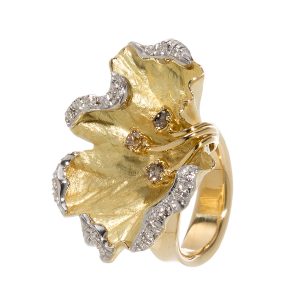
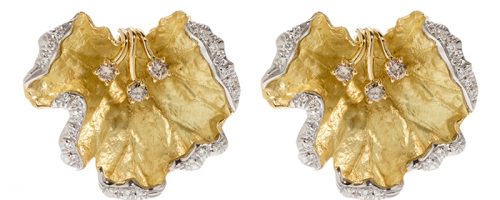
Large-volume creations cannot be simply conceived and drawn, but must be designed and studied to the smallest detail, in order to obtain an extremely particular jewel, such as a sample architecture, that is in harmony with the shapes of the body that He carries them.
To make beautiful jewelry it is not only necessary to know the anatomy of the body but also to have original and creative ideas.
You also have to know in depth the properties of the metal to maximize its characteristics.
The combination of creative ideas and sensitive hands is what really makes a creation unique.
Goldsmith crafts are one of the most widespread professions in Italy, with deep local roots and regional specializations, where companies are often family-owned and make custom-made jewelry for their clients. This typically Italian artistic vocation is illustrated by numerous localities and goldsmith districts.
Sophistication, craftsmanship, independent spirit, love for detail and, above all, for the high sense of delicious femininity and love that a jewel must translate: these are the keys to becoming one of the greats. Vendorafa has managed to combine all these criteria in its pieces.
Vendorafa Lombardi jewelery pieces they are born in essential ways: organic patterns in continuous harmony with intuition and experience, research and creativity. The desire to explore new planning routes and new manufacturing strategies generates harmonious solutions and original tactile effects.
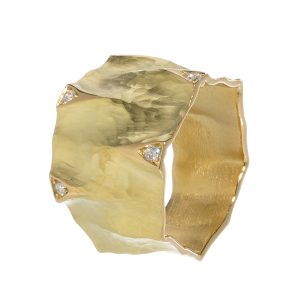
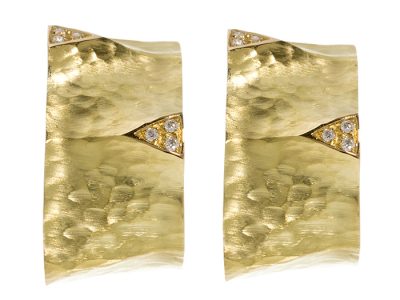
The purity of gold is taken to a higher level by design and enhanced by the greatest attention to detail.
Gold is unique and irresistible, it has fascinated civilizations since the beginning of time. It is an irresistible metal, discovered about 6000 years ago in Mesopotamia, with its beauty and fascination it has always been the metal closest to the Gods.
Its malleability, you have to think that it is a little harder than lead, but so malleable that an ounce of gold of little more than 31 g can be transformed into an ultra-thin sheet of more than 10 m, the ductility means that it can be rolled in more 80 m of gold thread.
Yellow is the color of gold par excellence, jewelry making techniques are so important and diverse that, together with the brilliance of gold, they can fully enhance yellow gold, more than white or pink.
Vendorafa jewels in yellow, pink or white are always 18K, the different shades of white and pink can be obtained with a variable alloy of silver or copper inside.
Lost wax casting, embossing, molding, are still the same traditional techniques, only taking advantage of new technologies that require the special hand of the master craftsmen of Vendorafa Manual processes such as hammering, engraving and embossing have always characterized Vendorafa Lombardi jewels.
Vendorafa creations are conceived, created, designed and made with Italian hands, heart and soul.
The work, made exclusively by hand, enhances the material value of gold, its light and its aesthetic warmth.
More than sixty years of jewelry made in Italy thanks to the passion of expert goldsmiths. Since 1951, Vendorafa has been creating and producing collections that are known and recognized as a sign of Made in Italy style and excellence.
